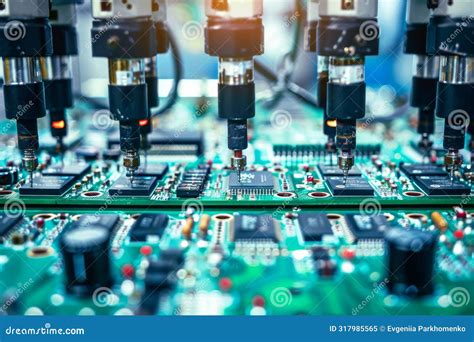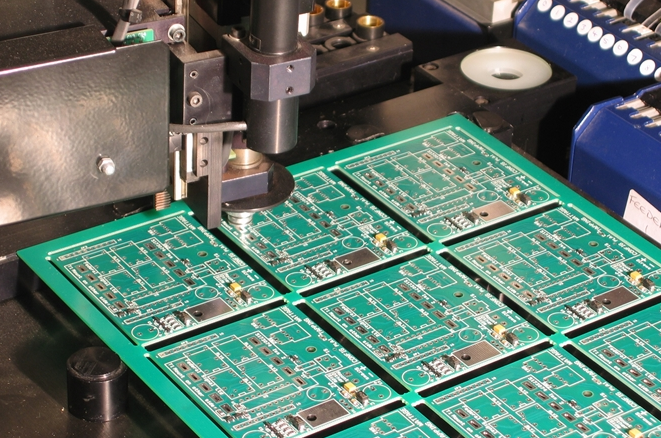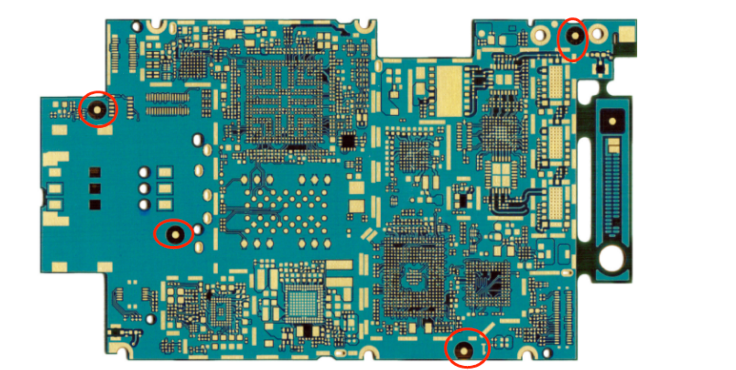The Future of Automated Circuit Board Assembly Technology

Key Takeaways
The advancements in automated circuit board assembly (commonly referred to as pcb assembly or pcba) technology have substantially reshaped the landscape of electronics manufacturing. As industries continue to demand higher efficiency and precision, these innovations play a pivotal role in addressing these needs.
One of the significant benefits of embracing automation in pcb assembly is the ability to enhance production capabilities while minimizing human error. This shift not only streamlines operations but also ensures a higher degree of accuracy in the assembly process, which is critical for maintaining product quality.
Furthermore, scalability is increasingly vital as market demands fluctuate. Modern automated systems can be adapted to various production sizes without a complete overhaul, offering manufacturers flexibility that was previously unattainable. This adaptability allows businesses to optimise their production lines based on current demands.
“Embracing automation isn’t just about keeping pace with technology; it’s about redefining what’s possible in manufacturing.”
A comparative analysis of traditional methods and automated solutions reveals significant disparities in efficiency and speed, making automation the clear choice for those looking to advance their manufacturing processes. As we examine successful case studies from industry leaders, it becomes apparent that those who have adopted these advancements not only gain a competitive edge but also contribute to a more sustainable future by reducing waste and improving resource management.
| Aspect | Traditional Methods | Automated Circuit Board Assembly |
|---|---|---|
| Efficiency | Moderate | High |
| Precision | Lower | Higher |
| Scalability | Difficult | Easy |
| Quality Control | Labor-intensive | Automated |
In summary, the evolution and implementation of automated circuit board assembly are set to influence future manufacturing standards significantly, ensuring that players in this market are better equipped to meet emerging challenges and opportunities.
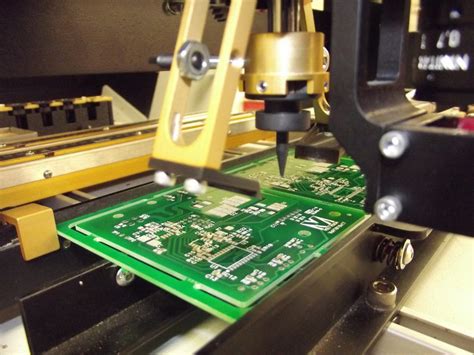
Introduction to Automated Circuit Board Assembly Technology
Automated circuit board assembly, commonly referred to as pcb assembly, has dramatically transformed the landscape of electronics manufacturing. At its core, pcba technology involves the use of automated machinery and software to handle the assembly process, which significantly reduces human error and increases production speed. Advances in robotics and machine vision systems have enabled manufacturers to achieve unparalleled levels of precision in placing components on circuit boards, ensuring that each connection is reliable and meets stringent quality standards. As components continue to shrink in size while becoming more complex, the innovations driving this technology are essential for maintaining efficiency in production lines. Furthermore, automated circuit board assembly is constantly evolving through integration with artificial intelligence (AI), allowing for real-time adjustments based on feedback from the production process. This adaptability not only enhances the scalability of operations but also aligns with market demands for quicker turnaround times and increased customization. Consequently, as we look ahead, it becomes clear that the future trajectory of pcb assembly will continue to be shaped by these transformative technologies, paving the way for a new era in electronics manufacturing that emphasizes both quality and efficiency.
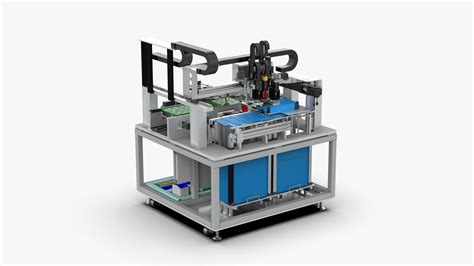
Key Innovations Driving Efficiency in Circuit Board Assembly
The world of pcb assembly has witnessed remarkable transformations driven by innovative technologies. One of the most significant advancements is the integration of automated systems, which streamline workflows and reduce human error. These systems utilize advanced robotics and artificial intelligence to enhance the speed and accuracy of the pcba process. For instance, automated pick-and-place machines have been designed to precisely place components on circuit boards, minimizing misplaced parts and improving overall assembly efficiency. Furthermore, the incorporation of smart sensors allows for real-time monitoring and adjustments during assembly, enabling companies to respond swiftly to any irregularities. This level of automation not only boosts productivity but also enhances scalability, allowing manufacturers to meet varying market demands without compromising on quality. As a result, these technological innovations are not just improving efficiency but are also ensuring that pcb assembly processes remain competitive in an evolving landscape where precision and adaptability are paramount.
Enhancing Precision in Automated Manufacturing Processes
In the realm of automated circuit board assembly, precision stands as a pivotal component that significantly affects the overall quality of the pcb assembly process. The integration of advanced technologies such as robotics and artificial intelligence has revolutionized how manufacturers approach their pcba operations. These innovations not only enable more accurate placement of components but also facilitate meticulous inspection processes that drastically reduce errors. With high-resolution cameras and sophisticated algorithms, manufacturers can identify minute discrepancies in real-time, ensuring that each assembled board adheres to the strictest quality standards. Furthermore, as production scales, enhanced precision methods allow for smaller tolerances and more intricate designs, empowering engineers to push the boundaries of electronic connectivity. This remarkable transformation not only elevates product reliability but also fosters a culture of continuous improvement within electronics manufacturing. As these advancements evolve, they promise to redefine operational benchmarks, making precision not just an aim but an achievable standard across the industry.
Scalability: Adapting to Market Demands in Electronics Production
In the rapidly evolving landscape of electronics production, scalability plays a pivotal role in ensuring that companies can meet fluctuating market demands effectively. As the need for more efficient and precise pcb assembly processes increases, manufacturers are leveraging innovative technologies that allow for greater adaptability in production lines. Modern pcba solutions integrate automated systems capable of seamlessly increasing or decreasing output based on real-time assessments of demand, thus ensuring minimal downtime and resource wastage. This level of adaptability not only enhances productivity but also facilitates a more responsive manufacturing approach. Furthermore, as consumer preferences shift towards personalized electronic devices, the need for scalable solutions becomes even more critical. Companies embracing automation and sophisticated algorithms can pivot swiftly to changing specifications or quantities, maintaining competitiveness in a crowded marketplace. The ability to easily scale operations impacts both delivery timelines and cost-effectiveness, crucial factors that influence success in today’s electronics industry. By investing in such adaptive technologies, manufacturers not only secure their market position but also foster an environment of continuous improvement and innovation in circuit board assembly practices.
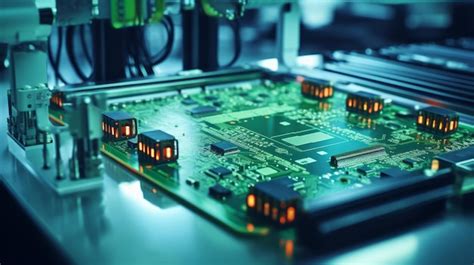
Impact of Automation on Quality Control and Reliability
The integration of automation in pcb assembly processes significantly enhances quality control and reliability within the manufacturing landscape. With the adoption of advanced technologies such as robotics and artificial intelligence, pcba operations are now equipped with sophisticated systems that monitor assembly stages in real-time. This close scrutiny enables early detection of anomalies, thereby ensuring that defects are minimized before they can impact the final product. As automated systems take charge of repetitive tasks, human error is substantially reduced, fostering higher precision in pcb assembly. Furthermore, automation facilitates consistent adherence to quality standards by automating inspection processes, which apply uniform criteria across all manufactured units. Consequently, manufacturers can achieve improved reliability in their products while enhancing production efficiency. By leveraging these advancements, companies can not only meet current market demands but also elevate their overall competitiveness in the fast-evolving electronics sector. Ultimately, the shift toward automated quality control mechanisms translates to a robust foundation for future innovations in pcba, ensuring that quality remains uncompromised as production scales.

Future Trends: The Landscape of Circuit Board Assembly Technology
As the electronics manufacturing sector evolves, the landscape of automated circuit board assembly (often referred to as pcba) is witnessing transformative trends that promise to redefine production capabilities. One of the most significant trends is the increasing integration of artificial intelligence and machine learning into pcb assembly processes. These technologies enable systems to not only perform tasks with remarkable speed and precision but also adapt dynamically to changing production requirements. Additionally, the emergence of advanced materials is allowing for lighter, smaller components that can enhance efficiency in pcb assembly operations. Spatial optimization through innovative layouts will further streamline processes, effectively reducing waste and improving throughput. Moreover, as consumers demand greater customization in electronics, manufacturers are shifting towards flexible production systems capable of handling smaller batches without sacrificing quality or increasing costs. This trend underscores a shift from traditional mass production towards a more agile framework—facilitated through automation—that can respond swiftly to market changes while maintaining high standards in quality control. As we glance into the future, these advancements are set to shape not only how manufacturers approach their operations but also how they envision scaling up their processes for an increasingly competitive industry.
Case Studies: Successful Implementations in the Industry
The journey toward efficient pcb assembly has been significantly shaped by various successful implementations within the industry. A standout example is the transformation seen in the automotive sector, where companies have adopted advanced pcba technologies to enhance their assembly lines. By integrating robotics and intelligent automation systems, they achieved remarkable reductions in assembly time and increased output quality. This not only streamlined their production processes but also allowed for quick adaptations to meet customer demands.
Another notable instance is in the consumer electronics field, where one leading firm implemented a fully automated pcb assembly line equipped with machine learning algorithms. These algorithms analyze production data to optimize assembly processes in real time, ensuring that precision and efficiency are consistently maintained. As a result, the company saw a substantial decrease in manufacturing defects, thereby improving overall product reliability.
These case studies illustrate how innovations in pcba technology have not only boosted operational efficiency but also set new benchmarks for quality control and reliability across various sectors. With these practical applications demonstrating the effectiveness of automation, it’s evident that as industries continue to embrace cutting-edge solutions, the future of automated circuit board assembly technology is bright, paving the way for further advancements that will shape electronics manufacturing.
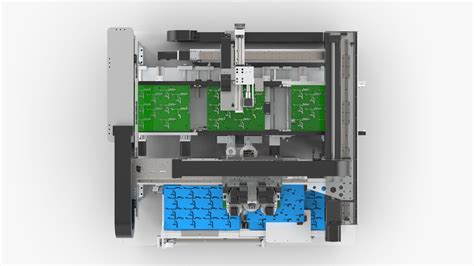
Conclusion
As we reflect on the exciting advancements in automated circuit board assembly (also known as pcba), it becomes evident that this technology is on the brink of a transformative era. The innovations in automation are not just enhancing efficiency but are fundamentally altering how the electronics manufacturing industry approaches production. These advancements improve precision, ensuring that each component is flawlessly placed and securely soldered, which is critical for the scalability of production processes. With trends pointing towards more intelligent systems capable of integrating data analytics, manufacturers can now anticipate market demands more effectively, responding swiftly by adjusting production schedules and quantities. Moreover, the role of quality control and reliability has been significantly impacted by automation, leading to higher standards in the finished product. The future of pcb assembly is promising, with a focus on sustainable practices and continued innovation paving the way for more streamlined operations. As we look ahead, understanding these developments will be crucial for industry stakeholders aiming to stay competitive in a rapidly evolving marketplace.
FAQs
What is PCB assembly?
PCB assembly, or pcba, is the process of assembling electronic components onto a printed circuit board (PCB) to create a functional electronic circuit. This process involves various techniques such as soldering, surface mounting, and testing to ensure quality and functionality.
Why is automation important in PCB assembly?
Automation in pcb assembly enhances efficiency, reduces human error, and improves overall production speed. Automated systems can handle repetitive tasks with precision, making the process faster and more reliable compared to manual assembly.
What technologies are driving innovation in automated circuit board assembly?
Innovations such as robotics, AI-driven inspection systems, and advanced soldering techniques are transforming pcba processes. These technologies allow for real-time monitoring and adjustments during production, optimizing yield rates.
How does automated circuit board assembly impact quality control?
Automated systems significantly improve quality control by employing precise measurement tools and real-time feedback mechanisms. These features ensure that defects are detected early in the production line, leading to enhanced reliability of the final product.
Can automated assembly scale with market demands?
Yes, automated pcb assembly processes can easily scale up or down to meet fluctuating market demands. This flexibility allows manufacturers to quickly adapt production levels without compromising on quality or efficiency.

